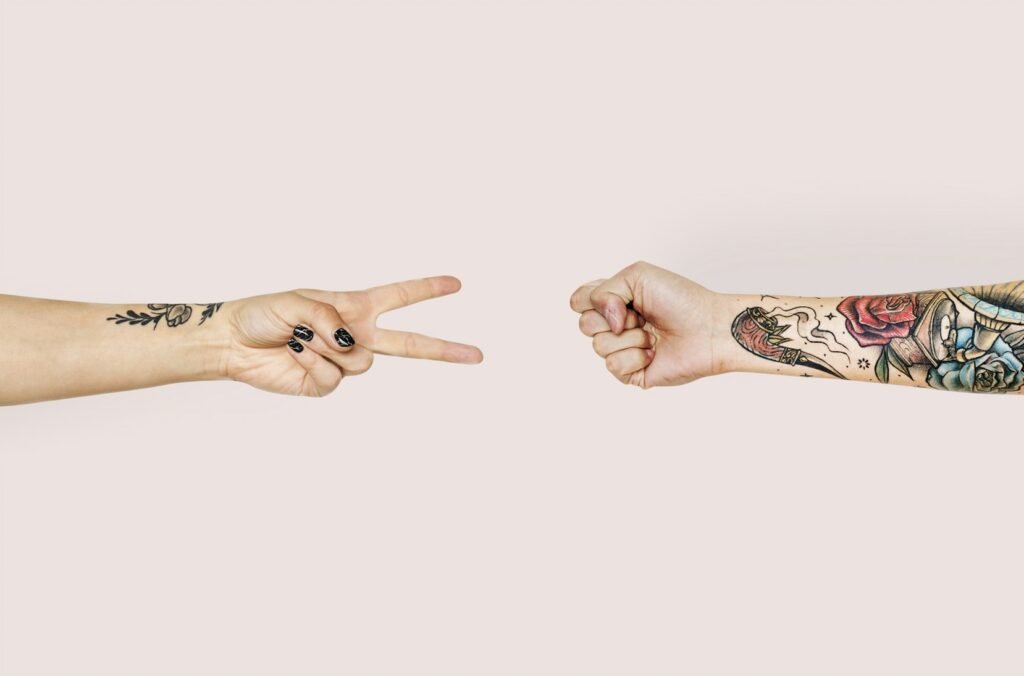Diverge, converge, but don't waste your time
Whatever ideation workshop you run (brainwriting, 6-to-1, crazy eight, design studio…), you generally arrive at a stage where many ideas have emerged and you feel that it is becoming useless to go around the table again to challenge them. It is therefore necessary to take the time to consider these different proposals and discuss them. Divergence gives way to convergence.

However, if it is not framed, the debate can quickly become sterile: nobody listens to each other, the discussion goes around in circles, the debate is endless. For various reasons (hierarchical position, personality, etc.), some participants do not dare to express themselves, defend their proposals, while others monopolize the floor, impose their vision of things... In this case, the exercise is unproductive, generates a lot of frustration and wastes everyone's precious time.
The purpose of this article is to help you finalize an ideation workshop by coming up with a list of ideas on which all participants agree.
#1 Expose and present your ideas
Start by laying out the different ideas using magnets or tape.
Invite each participant to present their ideas to the group in no more than 3 minutes. This verbalization exercise forces the author to simply formulate his proposals and justify their interest.
Even if you specified at the start of the ideation workshop that an idea is equal to a proposal, remember to break them down again if necessary. To facilitate the memorization of the different proposals and the rest of the workshop, name them or summarize them in a few words.
#2 Discuss and challenge each proposal
This is followed by 5 minutes where participants can ask questions, give feedback, consider alternatives, suggest improvements… while keeping in mind the scope and objectives of the project.
It is important to time the exercise to energize the workshop and ensure that the timing is respected.
For it to be productive and constructive, I got into the habit of imposing a sentence to complete: "As a user...".
This method allows the group to avoid personal appreciations and therefore numerous cognitive biases (selective perception, heuristic of availability, etc.) by favoring a holistic evaluation. Do this with the different participants and if ideas seem similar, group them with the agreement of their respective authors or clarify their differences. This will avoid a vote-splitting effect.
If necessary, given the hierarchical pressure or in the presence of strong personalities, consider integrating a first phase of votes before this phase of exchanges to limit group effects and more particularly the effect of fashion.
If the exchanges are rich and the first proposals lack maturity or can be reworked, consider doing a new iteration of ideation from these ideas.

#3 Vote for the most relevant
Now that each participant has taken note of the different proposals and that the exchange has provided more details on them, it is time to identify the best ones.
Before that, it is important to remember the business context, the objectives, the personas... so that each decision takes these parameters into account.
Indeed, it is not a question of placing the voters at the center of the concerns but the end user.
Also specify that the budgetary, technical, commercial considerations… will come in a second during the prioritization. For the time being, it is essential to focus on the relevance and therefore the added value of the solutions.
Thus, I will present several methods, more and more closed, and give you many tips. Know that you can carry out these voting systems successively or favor one in particular.

Heatmap voting
Popularized by the design sprint, this method consists of assigning an unlimited number of votes to participants. The latter thus have a maximum of 5 minutes to submit stickers, all similar, on the ideas they favour. Also called dotmocracy -contraction of dowry and democracy-, this voting system allows participants to express themselves freely by freeing themselves from their hierarchical level and validation. Like heatmaps, this representation illustrates the overall intent of the team.
Dot-voting and its variants
This facilitation method, adopted for many years in management agile ou read, is based on the same principles as heatmap voting, except that the number of stickers per participant is limited.
The number is to be adjusted taking into account the number of participants and the number of proposals to be evaluated. There are many variations that may be relevant depending on the feedback you want to collect:
- by assigning a color per profession
- by doubling the number of stickers and using two distinct colors to dissociate positive and negative votes
- by assigning a value to each sticker, ranging from 1 to the number of stickers per participant
- by distributing stickers of different sizes to show the importance of each vote
great vote
The previous voting systems put all the participants on an equal footing by deliberately omitting the level of decision of each. Rightly so, because, as a reminder, voters must consider the added value for the end user. However, these methods have their limits because they are not always representative of the company's operating mode and the internal decision-making process.
Even having integrated decision-makers or top management, an umpteenth validation can intervene and call into question all of this work. In this case, the decisions are strategic and go beyond any consensus and empathy. Eh yes, evangelism still has a bright future ahead of it.
So, if one or more people have the final decision-making power, assign them specific stickers and let them vote.
They can thus consider the various proposals and the votes of the other participants before arbitrating. On the other hand, if the decisions are shared, give each voter a number of stickers proportional to their decision-making power.

And after?
You can redo this voting workshop with end users to get immediate feedback, upstream of the design process, and compare their vision with that of your voters. Depending on the gap, do what is necessary by adjusting your personas, integrating more users in the workshop...
Finally, you can follow up on your workshop by carrying out prioritization work and quickly testing these different hypotheses before developments. I'll give you an appointment in a future article, to address the subject.
TAKE AWAY
- Take advantage of the ideation workshop and the involvement of the participants to exchange and debate on all the proposals
- Involve decision-makers early in the design process to allow them to integrate all of the reflection and to be able to vote with knowledge of the causes
- Adapt the voting system to your project context
- Democratize and empathize the decision-making process as much as possible
Remember that these are only assumptions, so test them!
Do not hesitate to share your advice, your experience and your opinion on the subject, in the comments or on our social networks. We will be happy to discuss.
Projects
- The book " Sprint: How to solve big problems and test new ideas in just five days by Jake Knapp
- The book " Lean UX: Applying lean principles to improve user experience by Jeff Gothelf and Josh Seiden
- A short post by Jay Posey on the importance of context and therefore the difference between an idea and a solution
Alexandre, UX Designer @UX-Republic
STORYTELLING: THE ART OF CONVINCING # Paris
SMILE Paris
163 quay of Doctor Dervaux 92600 Asnières-sur-Seine
UX/UI ECO-DESIGN # Paris
SMILE Paris
163 quay of Doctor Dervaux 92600 Asnières-sur-Seine
DESIGN THINKING: CREATING INNOVATION # Belgium
UX-REPUBLIC Belgium
12 avenue de Broqueville - 1150 Woluwe-Saint-Pierre
MANAGING AND MEASURING UX # Paris
SMILE Paris
163 quay of Doctor Dervaux 92600 Asnières-sur-Seine
DESIGN SPRINT: INITIATION & FACILITATION # Paris
SMILE Paris
163 quay of Doctor Dervaux 92600 Asnières-sur-Seine
UX-DESIGN: THE FUNDAMENTALS # Belgium
UX-REPUBLIC Belgium
12 avenue de Broqueville - 1150 Woluwe-Saint-Pierre
GOOGLE ANALYTICS 4 #Paris
SMILE Paris
163 quay of Doctor Dervaux 92600 Asnières-sur-Seine
ACCESSIBLE UX/UI DESIGN # Belgium
UX-REPUBLIC Belgium
12 avenue de Broqueville - 1150 Woluwe-Saint-Pierre












